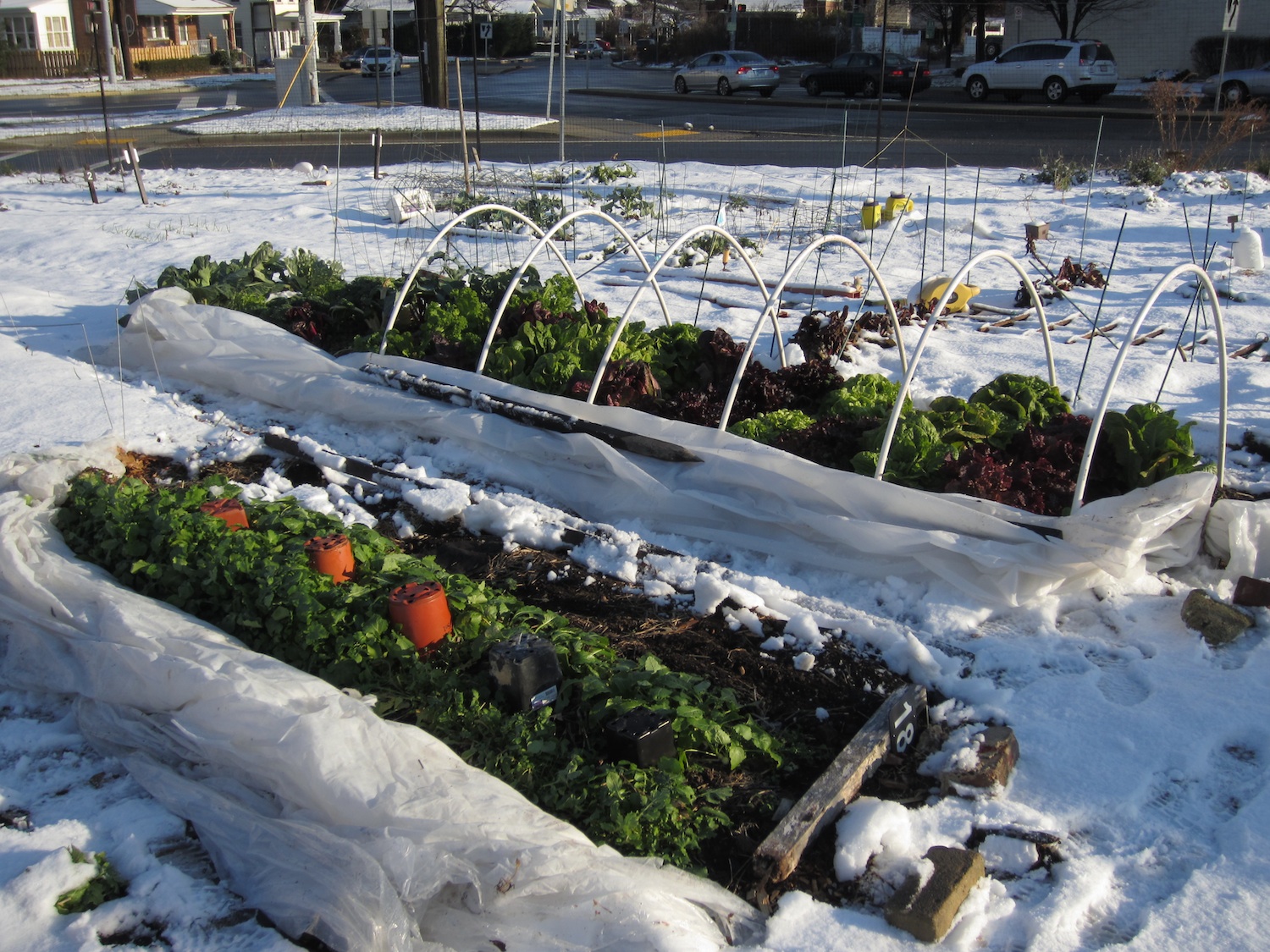Organic Winter Gardening: Beginner's Guide

Are you ready to embrace the chill and transform your garden into a winter wonderland of fresh, organic produce? Contrary to popular belief, gardening doesn't have to hibernate when the temperatures drop. In fact, organic winter gardening can be incredibly rewarding, offering a bounty of cold season crops that thrive in the crisp air. So, grab your gloves and let's dive into the world of organic winter gardening methods for beginners.
Why Venture into Winter Gardening?
Imagine your garden as a well-stocked pantry, brimming with fresh, nutritious vegetables even in the coldest months. Winter gardening not only extends your harvest season but also introduces a delightful array of cold season crops that are as hardy as they are delicious. Plus, there's something uniquely satisfying about nurturing life in the midst of winter's dormancy.
Getting Started: Essential Beginner Gardening Tips
Understanding Your Climate
Before you dive into planting, it's crucial to understand your local climate. The USDA Plant Hardiness Zone Map is an excellent resource for determining which plants are likely to thrive in your area. Knowing your zone will help you select the right winter vegetable garden crops.
Preparing Your Soil
Healthy soil is the foundation of any successful garden. In the fall, enrich your soil with organic matter like compost or well-rotted manure. This will improve soil structure and fertility, giving your plants the best start possible.
Choosing the Right Plants
Not all plants are created equal when it comes to cold weather gardening. Some organic winter plants are naturally more resilient to frost and can even taste sweeter after a light freeze. Here are a few cold-hardy favorites:
- Spinach: This leafy green is not only nutritious but also incredibly resilient, capable of withstanding temperatures as low as 20°F (-6°C).
- Kale: A superfood that thrives in cooler temperatures, kale is a staple in any winter garden.
- Carrots: These root vegetables can be left in the ground until you're ready to harvest, even under a layer of snow.
- Broccoli: This cruciferous vegetable loves cool weather and can produce well into the winter.
Planting Your Winter Garden
Timing is Everything
Timing your planting is key to a successful winter garden. Most cold season crops need to be planted in late summer or early fall to ensure they have enough time to mature before the first hard frost. Consult a planting calendar specific to your region for the best results.
Protecting Your Plants
Even the hardiest of plants can benefit from a little extra protection. Row covers, cold frames, and cloches can help insulate your plants from extreme temperatures and extend your growing season.
Maintaining Your Winter Garden
Watering and Mulching
While winter gardens generally require less water than their summer counterparts, consistent moisture is still important. Mulching with organic materials like straw or leaves can help retain moisture and insulate the soil, protecting your plants from temperature fluctuations.
Pest and Disease Management
Organic gardening means avoiding synthetic pesticides and herbicides. Instead, focus on prevention by maintaining healthy soil, rotating crops, and encouraging beneficial insects. For pest issues, consider using natural remedies like neem oil or insecticidal soap.
Harvesting and Storing Your Winter Bounty
When to Harvest
Knowing when to harvest is crucial for optimal flavor and nutrition. Most winter vegetable garden crops are ready to harvest when they reach a certain size or maturity. For example, spinach can be harvested when the leaves are about 4-6 inches long, while carrots are typically ready when they reach about 1 inch in diameter.
Storing Your Harvest
Proper storage can extend the life of your harvest. Root vegetables like carrots and beets can be stored in a cool, dark place with high humidity. Leafy greens should be stored in the refrigerator, while hardier vegetables like cabbage and broccoli can be kept in a cool, dry place.
Conclusion: Embrace the Chill
Organic winter gardening is a rewarding journey that not only extends your growing season but also introduces you to a world of delicious and nutritious cold season crops. By understanding your climate, preparing your soil, choosing the right plants, and providing adequate protection, you can transform your garden into a thriving oasis even in the coldest months.
So, are you ready to embrace the chill and start your own organic winter garden? The rewards are plentiful, and the journey is as enriching as the harvest. Happy gardening!
FAQs
What are the best vegetables to grow in winter? Some of the best vegetables to grow in winter include spinach, kale, carrots, broccoli, and cabbage. These plants are naturally resilient to cold temperatures and can thrive in a winter garden.
How do I protect my winter garden from frost? Protecting your winter garden from frost can be done using row covers, cold frames, or cloches. These tools help insulate your plants from extreme temperatures and extend your growing season.
When should I start planting my winter garden? The best time to start planting your winter garden is in late summer or early fall. This ensures that your plants have enough time to mature before the first hard frost.
How do I maintain healthy soil in my winter garden? Maintaining healthy soil in your winter garden involves enriching it with organic matter like compost or well-rotted manure. This improves soil structure and fertility, giving your plants the best start possible.
What are some natural pest control methods for a winter garden? Natural pest control methods for a winter garden include using neem oil or insecticidal soap. Prevention is also key, so focus on maintaining healthy soil, rotating crops, and encouraging beneficial insects.


0 Response to "Organic Winter Gardening: Beginner's Guide"
Post a Comment